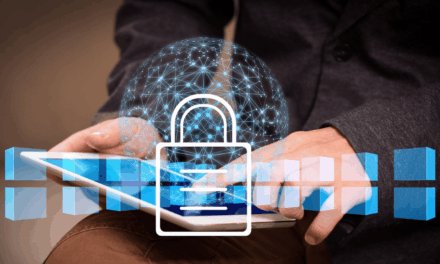Globally, digital transformation and cybersecurity are two top-of-mind issues at the Board level for organizations across all industry sectors.
Whether it’s to improve customer experience for revenue and profit, or to enhance employee experience for retention of top talent, organizations – large and small – are digitally transforming to ensure their survival and success in the digital economy.
In this transformation journey, where apps and data are key drivers for better business decisions and performance, it is inevitable that protecting your business from online threats has become a priority.
Businesses – and their directors and managers – have to be aware of their cybersecurity exposure and risks, and to ensure adequate protection and control.
Real risks
Consider this scenario: A medical clinic’s patient records or a small financial institution’s customer details are stolen by hackers or accidentally leaked. You may think, as a small business with maybe just hundreds of names in your database, you’re an unlikely target.
However, even if just one of your patients or customers is a celebrity or a high-networth individual, the cybercriminal’s purpose would have been accomplished.
And in today’s highly interconnected value chain, your being the weakest link in that chain could easily lead to a breach in your business partners’ networks.
A single data breach can result in a loss of hundreds of thousands of dollars, put personal data at risk, or even damage a company’s reputation heavily.
That’s why governments around the world, including Singapore, have updated their cybersecurity regulations to ensure businesses pay serious attention to protecting themselves, their customers and their business partners in the digital economy we now operate in.
Being aware of the risks involved is the first step. Next, we need to know the challenges we have to overcome.
Key challenges
The threat landscape today has evolved as quickly as – if not faster than – digital business transformation.
Four key challenges have reared their heads in the digital economy:
- Complexity of technology: One key challenge to securing networks and devices is that there are multiple moving parts to cybersecurity. This includes email security and spam protection, network security, user password management, and many others.
- Sophistication of threats: Today’s cybercriminals use multiple ways to get into your network and steal crucial information like payment records, corporate assets, sensitive client and employee data, such as financial or medical records.
- Obsolescence of traditional security: Traditional anti-virus solutions have become ineffective, with security threats evolving faster than they can be identified. New, unknown threats are almost impossible to detect.
- Growth of threat surface: The advent of ‘Bring Your Own Device” (BYOD) practices and the need to be digitally connected to other organizations in the value chain translate into a growing number of endpoints connected to your network. This increases the number of entry points for potential threats to infiltrate your network, complicating the visibility and control needed to secure your infrastructure.
Alarming numbers
Mobile apps and cloud services are key drivers in the digital economy. While they generate lots and lots of data that can be useful for your business decisions, they are often created at or available to endpoint devices.
Meanwhile, cybercriminals are exploiting more and more sophisticated techniques to compromise these devices and to steal data – including social engineering, email phishing, malware botnets, stolen credentials, software vulnerability exploits, distributed denial of service attacks, and ransomware.
Osterman Research highlighted that respondents in its New Methods for Solving Phishing, Business Email Compromise and Other Security Threats study believe that cyberthreats are more sophisticated than ever:
- 58% say that phishing attacks have reached their end-users
- 59% say that their existing IT infrastructure is infected by ransomware
- 49% share that malware is becoming more destructive
According to Absolute’s 2019 Endpoint Security Trends Report, 70% of data breaches begin at the endpoint, despite global IT security spending being at its peak.
Research has also shown that small- and medium-sized enterprises (SMEs) are highly prone to such breaches:
- Cisco in its Cybersecurity Report: Special SMB Edition found that 40% of small and medium businesses suffered eight or more hours of downtime from a data breach
- The Exclusive Research Report: The 2018 State of SMB Cybersecurity reported that 82% of small and medium businesses experienced attacks by malware that evaded their legacy anti-virus solutions
- Chubb’s 2019 SME Cyber Preparedness Survey found that 66% of Singapore SMEs are not aware of all the cyberthreats they face, and 32% that experienced cyber incidents did not know which data files were affected
So what can you do today to protect your business tomorrow?
Future-proofed solutions
To protect your network against multiple cyberthreats, while simplifying management and saving costs in the long run, you should consolidate your network security management with a Unified Threat Management (UTM) solution.
To be able to respond to cybersecurity threats before the damage is done, subscribe to an Endpoint Protection Service.
In support of the Singapore government’s Productivity Solutions Grant (PSG), Singtel has curated a range of cybersecurity solutions that will enhance the security of your business.
Tap on this simplified PSG to protect your business NOW, to benefit from grants of up to 70% for the UTM and Endpoint Protection solutions.

















